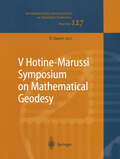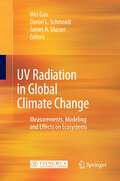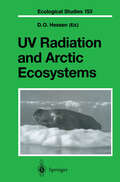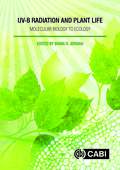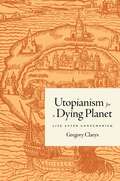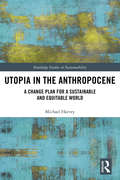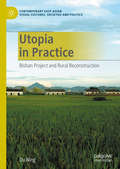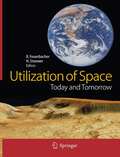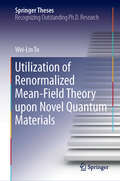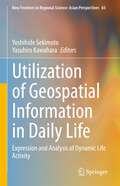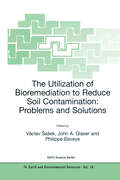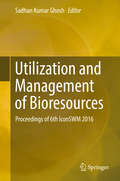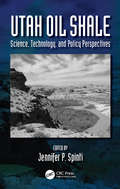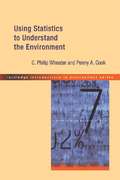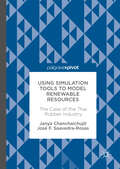- Table View
- List View
"V" shaped valley (UEB Uncontracted)
by RnibThis page shows four images of river valley erosion. There is a locator dot shown, which will be at the top left when the image is the correct way up. Each image is surrounded by an image border. In each image the river is shown in cross section with the water in the centre of each image. There are stones in the water. The image in the top left of the page shows vertical downwards erosion. Stones and rock particles are scraped and bounced along the channel bed. The image in the top right of the page shows the steep sides being attacked by weathering. This breaks up and loosens the soil and rock. The image in the bottom left of the page shows the loosened material creeping down the slope because of gravity and rainwater washing it down. The river then carries it away. The image in the bottom right of the page shows the final shape of the valley.
"V" shaped valley (UEB Contracted)
by RnibThis page shows four images of river valley erosion. There is a locator dot shown, which will be at the top left when the image is the correct way up. Each image is surrounded by an image border. In each image the river is shown in cross section with the water in the centre of each image. There are stones in the water. The image in the top left of the page shows vertical downwards erosion. Stones and rock particles are scraped and bounced along the channel bed. The image in the top right of the page shows the steep sides being attacked by weathering. This breaks up and loosens the soil and rock. The image in the bottom left of the page shows the loosened material creeping down the slope because of gravity and rainwater washing it down. The river then carries it away. The image in the bottom right of the page shows the final shape of the valley.
"V" shaped valley (Large Print)
by RnibThis page shows four images of river valley erosion. There is a locator dot shown, which will be at the top left when the image is the correct way up. Each image is surrounded by an image border. In each image the river is shown in cross section with the water in the centre of each image. There are stones in the water. The image in the top left of the page shows vertical downwards erosion. Stones and rock particles are scraped and bounced along the channel bed. The image in the top right of the page shows the steep sides being attacked by weathering. This breaks up and loosens the soil and rock. The image in the bottom left of the page shows the loosened material creeping down the slope because of gravity and rainwater washing it down. The river then carries it away. The image in the bottom right of the page shows the final shape of the valley.
V Shaped Valley Creation (UEB uncontracted)
by RnibThis page shows four images of river valley erosion. There is a locator dot shown, which will be at the top left when the image is the correct way up. Each image is surrounded by an image border. In each image the river is shown in cross section with the water in the centre of each image. There are stones in the water. The image in the top left of the page shows vertical downwards erosion. Stones and rock particles are scraped and bounced along the channel bed. The image in the top right of the page shows the steep sides being attacked by weathering. This breaks up and loosens the soil and rock. The image in the bottom left of the page shows the loosened material creeping down the slope because of gravity and rainwater washing it down. The river then carries it away. The image in the bottom right of the page shows the final shape of the valley.
V Shaped Valley Creation (UEB contracted)
by RnibThis page shows four images of river valley erosion. There is a locator dot shown, which will be at the top left when the image is the correct way up. Each image is surrounded by an image border. In each image the river is shown in cross section with the water in the centre of each image. There are stones in the water. The image in the top left of the page shows vertical downwards erosion. Stones and rock particles are scraped and bounced along the channel bed. The image in the top right of the page shows the steep sides being attacked by weathering. This breaks up and loosens the soil and rock. The image in the bottom left of the page shows the loosened material creeping down the slope because of gravity and rainwater washing it down. The river then carries it away. The image in the bottom right of the page shows the final shape of the valley.
V Shaped Valley Creation (large print)
by RnibThis page shows four images of river valley erosion. There is a locator dot shown, which will be at the top left when the image is the correct way up. Each image is surrounded by an image border. In each image the river is shown in cross section with the water in the centre of each image. There are stones in the water. The image in the top left of the page shows vertical downwards erosion. Stones and rock particles are scraped and bounced along the channel bed. The image in the top right of the page shows the steep sides being attacked by weathering. This breaks up and loosens the soil and rock. The image in the bottom left of the page shows the loosened material creeping down the slope because of gravity and rainwater washing it down. The river then carries it away. The image in the bottom right of the page shows the final shape of the valley.
V Hotine-Marussi Symposium on Mathematical Geodesy: Matera, Italy June 17–21, 2003 (International Association of Geodesy Symposia #127)
Just as in the era of great achievements by scientists such as Newton and Gauss, the mathematical theory of geodesy is continuing the tradition of producing exciting theoretical results, but today the advances are due to the great technological push in the era of satellites for earth observations and large computers for calculations. Every four years a symposium on methodological matters documents this ongoing development in many related underlying areas such as estimation theory, stochastic modelling, inverse problems, and satellite-positioning global-reference systems. This book presents developments in geodesy and related sciences, including applied mathematics, among which are many new results of high intellectual value to help readers stay on top of the latest happenings in the field.
UV Radiation in Global Climate Change: Measurements, Modeling and Effects on Ecosystems
by Wei Gao Daniel L. Schmoldt James R. SlusserNumerous studies report that ultraviolet (UV) radiation is harmful to living organisms and detrimental to human health. Growing concerns regarding the increased levels of UV-B radiation that reach the earth's surface have led to the development of ground- and space-based measurement programs. Further study is needed on the measurement, modeling, and effects of UV radiation. The chapters of this book describe the research conducted across the globe over the past three decades in the areas of: (1) current and predicted levels of UV radiation and its associated impact on ecosystems and human health, as well as economic and social implications; (2) new developments in UV instrumentation, advances in calibration (ground- and satellite-based), measurement methods, modeling efforts, and their applications; and (3) the effects of global climate change on UV radiation. Dr. Wei Gao is a Senior Research Scientist and the Director of the USDA UV-B Monitoring and Research Program, Natural Resource Ecology Laboratory, Colorado State University. Dr. Gao is a SPIE fellow and serves as the Editor-in-Chief for the Journal of Applied Remote Sensing. Dr. Daniel L. Schmoldt is the National Program Leader for instrumentation and sensors at the National Institute of Food and Agriculture (NIFA) of the U.S. Department of Agriculture. Dr. Schmoldt served as joint Editor-in-Chief of the journal, Computers & Electronics in Agriculture, from 1997 to 2004. Dr. James R. Slusser retired in 2007 from the USDA UV-B Monitoring and Research Program at Colorado State University. He was active in the Society of Photo-Optical Instrumentation Engineers, the American Geophysical Union, and the American Meteorological Society. Dr. Slusser is currently pursuing his interests in solar energy and atmospheric transmission.
UV Radiation and Arctic Ecosystems (Ecological Studies #153)
by Prof. Dr.Although there are some biological processes that are supported by UV radiation, most organisms are stressed by it in various ways, e.g. through DNA damage.Top international experts present an integrated overview of UV radiation and its effects on terrestrial, freshwater and marine Arctic biota. Increased stratospheric ozone depletion and the corresponding increase in ground levels of UV radiation as well as ambient, "natural" UV radiation as a key ecological factor in the Arctic spring and summer are discussed in detail. Additionally, basic information on Arctic ecosystems is given. The volume provides not only an excellent account of present-day knowledge of the subject, but also describes the state of the art on which future research can be built.
UV-B Radiation and Plant Life: Molecular Biology to Ecology
by Pedro J. Aphalo Amy T. Austin Carlos L. Ballaré Paul W. Barnes Susanne Baldermann Melanie Binkert Janet F. Bornman Isabelle N. Bottger Stephan D. Flint Franziska S. Hanschen Éva Hideg Marcel Jansen Gareth I. Jenkins Karel Klem Susanne Neugart Monika Schreiner Åke Strid Mark A. Tobler Roman Ulm Otmar Urban Jason Wargent Melanie WiesnerUltraviolet-B radiation (UV-B) has profound effects on plant growth and development, and exposure varies with ozone depletion and across geographic regions, with ecosystem and agricultural consequences. This book deals with large-scale impacts but also how UV-B affects plants at the molecular level is also fascinating, and the UV-B photoreceptor has only recently been characterised. While UV-B radiation can be damaging, it also has a more positive role in plant photomorphogenesis. Consequently UV-B treatments are being developed as innovative approaches to improve horticulture. This book is a timely synthesis of what we know and need to know about UV-B radiation and plants.
Utopianism for a Dying Planet: Life after Consumerism
by Gregory ClaeysHow the utopian tradition offers answers to today’s environmental crisesIn the face of Earth’s environmental breakdown, it is clear that technological innovation alone won’t save our planet. A more radical approach is required, one that involves profound changes in individual and collective behavior. Utopianism for a Dying Planet examines the ways the expansive history of utopian thought, from its origins in ancient Sparta and ideas of the Golden Age through to today's thinkers, can offer moral and imaginative guidance in the face of catastrophe. The utopian tradition, which has been critical of conspicuous consumption and luxurious indulgence, might light a path to a society that emphasizes equality, sociability, and sustainability.Gregory Claeys unfolds his argument through a wide-ranging consideration of utopian literature, social theory, and intentional communities. He defends a realist definition of utopia, focusing on ideas of sociability and belonging as central to utopian narratives. He surveys the development of these themes during the eighteenth and nineteenth centuries before examining twentieth- and twenty-first-century debates about alternatives to consumerism. Claeys contends that the current global warming limit of 1.5C (2.7F) will result in cataclysm if there is no further reduction in the cap. In response, he offers a radical Green New Deal program, which combines ideas from the theory of sociability with proposals to withdraw from fossil fuels and cease reliance on unsustainable commodities.An urgent and comprehensive search for antidotes to our planet’s destruction, Utopianism for a Dying Planet asks for a revival of utopian ideas, not as an escape from reality, but as a powerful means of changing it.
Utopianism for a Dying Planet: Life after Consumerism
by Gregory ClaeysHow the utopian tradition offers answers to today’s environmental crisesIn the face of Earth’s environmental breakdown, it is clear that technological innovation alone won’t save our planet. A more radical approach is required, one that involves profound changes in individual and collective behavior. Utopianism for a Dying Planet examines the ways the expansive history of utopian thought, from its origins in ancient Sparta and ideas of the Golden Age through to today's thinkers, can offer moral and imaginative guidance in the face of catastrophe. The utopian tradition, which has been critical of conspicuous consumption and luxurious indulgence, might light a path to a society that emphasizes equality, sociability, and sustainability.Gregory Claeys unfolds his argument through a wide-ranging consideration of utopian literature, social theory, and intentional communities. He defends a realist definition of utopia, focusing on ideas of sociability and belonging as central to utopian narratives. He surveys the development of these themes during the eighteenth and nineteenth centuries before examining twentieth- and twenty-first-century debates about alternatives to consumerism. Claeys contends that the current global warming limit of 1.5C (2.7F) will result in cataclysm if there is no further reduction in the cap. In response, he offers a radical Green New Deal program, which combines ideas from the theory of sociability with proposals to withdraw from fossil fuels and cease reliance on unsustainable commodities.An urgent and comprehensive search for antidotes to our planet’s destruction, Utopianism for a Dying Planet asks for a revival of utopian ideas, not as an escape from reality, but as a powerful means of changing it.
Utopia in the Anthropocene: A Change Plan for a Sustainable and Equitable World (Routledge Studies in Sustainability)
by Michael HarveyUtopia in the Anthropocene takes a cross-disciplinary approach to analyse our current world problems, identify the key resistance to change and take the reader step by step towards a more sustainable, equitable and rewarding world. It presents paradigm-shifting models of economics, political decision-making, business organization and leadership and community life. These are supported by psychological evidence, utopian literature and inspirational changes in history.The Anthropocene is in crisis, because human activity is changing almost everything about life on this planet at an unparalleled pace. Climate change, the environmental emergency, economic inequality, threats to democracy and peace and an onslaught of new technology: these planetwide risks can seem too big to comprehend, let alone manage. Our reckless pursuit of infinite economic growth on a finite planet could even take us towards a global dystopia. As an unprecedented frenzy of change grips the world, the case for utopia is stronger than ever. An effective change plan requires a bold, imaginative vision, practical goals and clarity around the psychological values necessary to bring about a transformation. This book will be of great interest to students and scholars of the environmental humanities, sustainability studies, ecological economics, organizational psychology, politics, utopian philosophy and literature – and all who long for a better world.
Utopia in the Anthropocene: A Change Plan for a Sustainable and Equitable World (Routledge Studies in Sustainability)
by Michael HarveyUtopia in the Anthropocene takes a cross-disciplinary approach to analyse our current world problems, identify the key resistance to change and take the reader step by step towards a more sustainable, equitable and rewarding world. It presents paradigm-shifting models of economics, political decision-making, business organization and leadership and community life. These are supported by psychological evidence, utopian literature and inspirational changes in history.The Anthropocene is in crisis, because human activity is changing almost everything about life on this planet at an unparalleled pace. Climate change, the environmental emergency, economic inequality, threats to democracy and peace and an onslaught of new technology: these planetwide risks can seem too big to comprehend, let alone manage. Our reckless pursuit of infinite economic growth on a finite planet could even take us towards a global dystopia. As an unprecedented frenzy of change grips the world, the case for utopia is stronger than ever. An effective change plan requires a bold, imaginative vision, practical goals and clarity around the psychological values necessary to bring about a transformation. This book will be of great interest to students and scholars of the environmental humanities, sustainability studies, ecological economics, organizational psychology, politics, utopian philosophy and literature – and all who long for a better world.
Utopia in Practice: Bishan Project and Rural Reconstruction (Contemporary East Asian Visual Cultures, Societies and Politics)
by Ou NingThis book is a collection of texts on one of China's boldest social experiments in recent years: the rural reconstruction project in Bishan. The Bishan Project (2011-2016) was a rural reconstruction project in a small village Bishan, Anhui Province, China. The writings describe and criticize the social problems caused by China’s over-loading urbanization process and starts a a contemporary agrarianism and agritopianism discourse to resist the modernism and developmentalism doctrine which dominated China for more than a century, answering a global desire for the theory and action of the alternative social solution for today’s environmental and political crises.This practical utopian commune project ran for 6 years and caused a national debate on rural issues in China, when it was invited to be exhibited and presented abroad. This collection of writing will be of interest to artists, China scholars, architects, and the cultural community at large.
Utilization of Space: Today and Tomorrow
by Berndt Feuerbacher Heinz StoewerDescribes the various fields of application of astronautics and the underlying technology. Written on a level understandable for non-specialists. Provides an outlook on the future of this fascinating field.
Utilization of Renormalized Mean-Field Theory upon Novel Quantum Materials (Springer Theses)
by Wei-Lin TuThis book offers a new approach to the long-standing problem of high-Tc copper-oxide superconductors. It has been demonstrated that starting from a strongly correlated Hamiltonian, even within the mean-field regime, the “competing orders” revealed by experiments can be achieved using numerical calculations. In the introduction, readers will find a brief review of the high-Tc problem and the unique challenges it poses, as well as a comparatively simple numerical approach, the renormalized mean-field theory (RMFT), which provides rich results detailed in the following chapters. With an additional phase picked up by the original Hamiltonian, some behaviors of interactive fermions under an external magnetic field, which have since been experimentally observed using cold atom techniques, are also highlighted.
Utilization of Geospatial Information in Daily Life: Expression and Analysis of Dynamic Life Activity (New Frontiers in Regional Science: Asian Perspectives #65)
by Yoshihide Sekimoto Yasuhiro KawaharaThis book focuses on geospatial information in living spaces, providing many examples of its collection and use as well as discussing the problems of how it is used and its future prospects.Geospatial information science is in the process of evolving and being systematized, with the technical and usage aspects of the real world stimulating each other. This book systematizes the technical aspects of positioning; of geography, which manages and represents what is measured in units of earth coordinates; and of data science, which aims to efficiently express and process geographic information, all by introducing contemporary examples that are systematized with regard to their use in our living spaces. Examples of geospatial information used in almost all aspects of our lives, including urban areas, transportation, disaster prevention, health and medical care, agriculture, forestry and fisheries, culture, ecology, and topography, are presented, along with examples of their use in each area. One of the major features of this book is that it describes the use of data from earthquake disasters that is unique to Japan, as well as the use of open data and personal data in Japan, which is a trend that is gaining attention in many countries. In this way the book systematically describes events and circumstances in living spaces that are revealed by the expression and analysis of geospatial data, with case studies and discusses their use in the IoT era.
The Utilization of Bioremediation to Reduce Soil Contamination: Problems and Solutions (NATO Science Series: IV: #19)
by Václav Šašek John A. Glaser Philippe BaveyeTraditional reliance on chemical analysis to understand the direction and extent of treatment in a bioremediation process has been found to be inadequate. Whereas the goal of bioremediation is toxicity reduction, few direct, reliable measures of this process are as yet available. Another area of intense discussion is the assessment of market forces contributing to the acceptability of bioremediation. Finally, another important component is a series of lectures and lively exchanges devoted to practical applications of different bioremediation technologies. The range of subjects covers a wide spectrum, encompassing emerging technologies as well as actual, full-scale operations. Examples discussed include landfarming, biopiling, composting, phytoremediation and mycoremediation. Each technology is explored for its utility and capability to provide desired treatment goals. Advantages and limitations of each technology are discussed. The concept of natural attenuation is also critically evaluated since in some cases where time to remediation is not a significant factor, it may be an alternative to active bioremediation operations.
Utilization and Management of Bioresources: Proceedings of 6th IconSWM 2016
by Sadhan Kumar GhoshThe book contains high-quality research papers presented at Sixth International Conference on Solid Waste Management held at Jadavpur University, Kolkata India during November 23-26, 2016. The Conference, IconSWM 2016, is organized by Centre for Quality Management System, Jadavpur University in association with premier institutes and societies of India. The researchers from more than 30 countries presented their work in Solid Waste Management. The book is divided into two volumes and deliberates on various issues related to innovation and implementation in sustainable waste management, segregation, collection, transportation of waste, treatment technology, policy and strategies, energy recovery, life cycle analysis, climate change, research and business opportunities.
Utah Oil Shale: Science, Technology, and Policy Perspectives
by Jennifer SpintiIncludes full-color isopach and richness maps for each organic-rich and organic-lean oil shale interval within the upper Green River Formation. Offers computational exploration of trade-offs in drilling and heating options on the net energy return for oil produced from an in situ process. Analyzes costs and emissions associated with in situ production of oil shale. Discusses legal and policy issues for a nascent oil shale industry.
Utah Oil Shale: Science, Technology, and Policy Perspectives
by Jennifer P. SpintiIncludes full-color isopach and richness maps for each organic-rich and organic-lean oil shale interval within the upper Green River Formation. Offers computational exploration of trade-offs in drilling and heating options on the net energy return for oil produced from an in situ process. Analyzes costs and emissions associated with in situ production of oil shale. Discusses legal and policy issues for a nascent oil shale industry.
Using Statistics to Understand the Environment
by Penny A. Cook P. WheaterUsing Statistics to Understand the Environment covers all the basic tests required for environmental practicals and projects and points the way to the more advanced techniques that may be needed in more complex research designs. Following an introduction to project design, the book covers methods to describe data, to examine differences between samples, and to identify relationships and associations between variables.Featuring: worked examples covering a wide range of environmental topics, drawings and icons, chapter summaries, a glossary of statistical terms and a further reading section, this book focuses on the needs of the researcher rather than on the mathematics behind the tests.
Using Statistics to Understand the Environment
by Penny A. Cook P. WheaterUsing Statistics to Understand the Environment covers all the basic tests required for environmental practicals and projects and points the way to the more advanced techniques that may be needed in more complex research designs. Following an introduction to project design, the book covers methods to describe data, to examine differences between samples, and to identify relationships and associations between variables.Featuring: worked examples covering a wide range of environmental topics, drawings and icons, chapter summaries, a glossary of statistical terms and a further reading section, this book focuses on the needs of the researcher rather than on the mathematics behind the tests.
Using Simulation Tools to Model Renewable Resources: The Case of the Thai Rubber Industry
by Janya Chanchaichujit José F. Saavedra-RosasThis book provides a detailed study of the Thai rubber industry and its utilisation of renewable resources, focussing on the use of open source software in building supply chain models. By describing elements that the supply chain is composed of and relating this to Thailand’s rubber industry, the authors then outline the construction of a Discrete Event Simulation (DES) model and use open source software to model renewable resources in this particular supply chain. Emphasis is placed on the way that modelling can aid the important decision-making required in the exploitation of natural resources. By taking a hands-on approach and offering a valuable guide for readers, this book not only appeals to academics in the fields of industrial engineering, operations, logistics and supply chain management, but also to practitioners, policy-makers and associations involved in the rubber industry.

